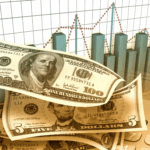In the evolving landscape of U.S. household finances, the second quarter of 2025 has seen a noticeable shift. While debt levels increase, signifying consumer reliance on credit, many families are grappling with managing their expenses. Consumer spending, a pillar of the nation’s economic vitality, is being heavily scrutinized as borrower defaults and changing credit preferences reshape financial dynamics. As such, this landscape warrants a deeper look into the factors driving these changes and the potential implications for future economic health.
In years past, U.S. household debt has been a focal point despite fluctuating economic conditions. Recent figures now indicate a climb to $18.39 trillion, driven by substantial contributions from mortgage balances and auto loans. This development is reminiscent of periods where credit growth paralleled both economic optimism and underlying financial strain among consumers.
What Trends Spur the Rise in Debts?
Mortgage balances have significantly contributed to the overall rise, increasing by $131 billion in a stable housing sector but amid cost concerns. Auto loan originations also showed growth, reaching $188 billion, an increase from the previous quarter. Credit card balances saw a boost, with aggregate credit limits expanded by $78 billion, underscoring lender confidence in consumer borrowing.
Can Rising Delinquencies Imbalance Economic Stability?
Yes. Student loans reveal cracks in the repayment landscape, with delinquency rates spiking after paused payments resumed. The share of severely delinquent loans escalated to 12.9%, inflicting notable credit score drops on over 2 million borrowers. Bloomberg Economics warns of potential annual consumer spending reductions by $63 billion due to this financial deterioration.
Beyond student loans, mortgages and home equity lines of credit are facing growing delinquency rates, albeit still aligned with historical performance. Notably, higher-income consumers, previously seen as more stable, are now feeling the pinch, with 70% of those earning over $100,000 living paycheck to paycheck. Rising mortgage obligations are a contributing factor, challenging financial security in traditionally resilient demographics.
Shifts in payment preferences also highlight changing trends. As conventional credit mechanisms strain younger consumers, alternatives like Buy Now, Pay Later (BNPL) schemes are gaining traction, especially among Generation Z and younger millennials.
“Younger consumers find BNPL options more viable than traditional credit cards.”
“Installment plans influence 43% of consumers when selecting retailers.”
Today’s consumer credit landscape is indicative of broader economic implications. As debt levels mount and repayment risks intensify, the need for refined financial solutions grows. This scenario mirrors previous economic cycles, where growth in credit often preceded financial corrections. Understanding these trends, especially in relation to younger generational behaviors, is crucial for forecasting financial wellbeing.










